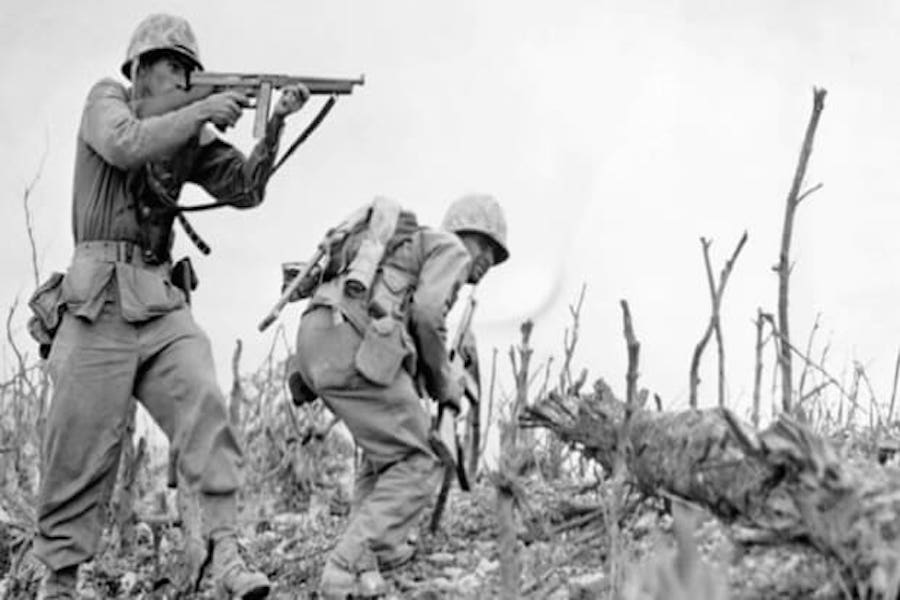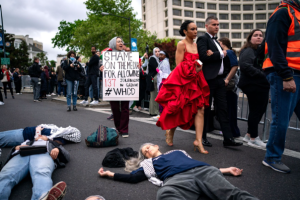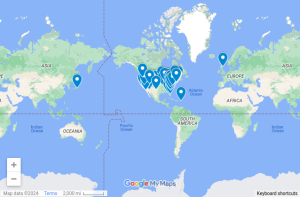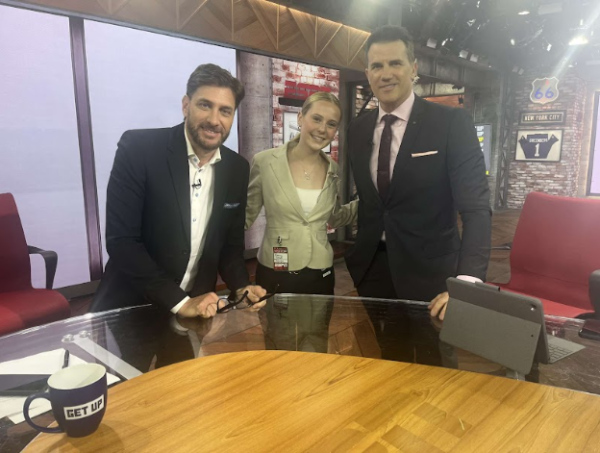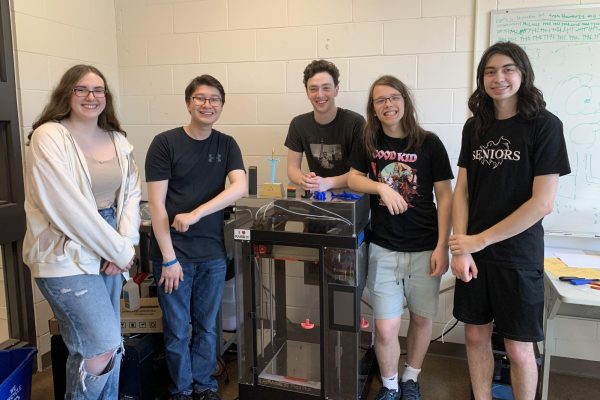The wars end draws closer
U.S. Marines fighting on Okinawa.
May 18, 2020
This is a continuation of a series
While my great grandfather was being shipped throughout bases in China, just a few hundred miles to the northeast, the bloodiest battle in the Pacific Theater was being waged.
The United States’ strategy of “island-hopping” was inching closer to the Japanese home islands. For the last three years, U.S. Marines fought battle after battle, taking back territory all throughout the South Pacific. All the while, U.S. Army Air Forces were decimating Japanese industries, destroying the vital materials of the enemy forces. The further into Japanese territory Allied forces advanced, the more fanatical its defenders became. Through all the blood, toil, tears, and sweat that had been shed throughout the Pacific, one thing was becoming evidently clear: the Japanese would not surrender.
As the war drew further toward Japan’s shores, the island of Okinawa came into view. It was a strategic island south of Japan and would prove vital to an invasion of the Japanese home islands. When Allied troops landed on the shores, they were met with suicidal resistance.
Kamikaze pilots crashed planes into naval vessels, and Japanese troops would charge directly into enemy fire, choosing death over surrender. The Japanese army had also conscripted thousands of civilians to fight to the bitter end, despite most not even being armed with firearms.
Even after the fighting, death continued. Being indoctrinated into believing that occupation by the Americans would be a fate worse than death, Japanese civilians committed mass suicides. Entire families would leap from cliff sides, or huddle together around grenades and pull the pins, while U.S. troops looked on in horror.
If this battle was to be a taste of the invasion of Japan itself, the death toll would be catastrophic, not only for Allied troops but the millions of Japanese civilians and soldiers who would fight to the bitter end.
As James was moved again from China to one of the liberated islands, the future looked bleak and bloody.
July 19, 1945 – #762 Boarded L.S.T. boat-few marines on board-casualties from Battle of Okinawa-going back.
July 27 – Arrived Saipan anchored off harbor-went ashore on 27th. At Saipan – saw the old gang.
Aug. 1st, 1945 – Left harbor small convoy – composed mostly of L.S.T. & L.S.M. – arrived off Okinawa.
As James wrote these few entries, uncertain about how much longer the war would last, engineers were fiddling away with a top-secret weapon that was developed to bring the war to an end.
On a small island over a thousand miles from Japan, final preparations were being made for one of the most important missions of the war.
On August 6, 1945, Colonel Paul Tibbets started up the engines to his Boeing B-29. Named after his mother, the “Enola Gay” was about to become the most famous aircraft in the world. After flying for hours over the ocean, the Japanese industrial city of Hiroshima grew closer. As the bomb bay doors opened, and the ordinance nicknamed “Little Boy” was dropped, Tibbets put the plane into a steep turn. He had forty-five seconds to escape what was to come. As the timer on the bomb ticked down to zero, Hiroshima was engulfed in a blinding light, atomized into oblivion.
For Japan, the writing was on the wall.
Stay tuned for the next story!

